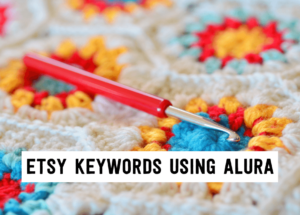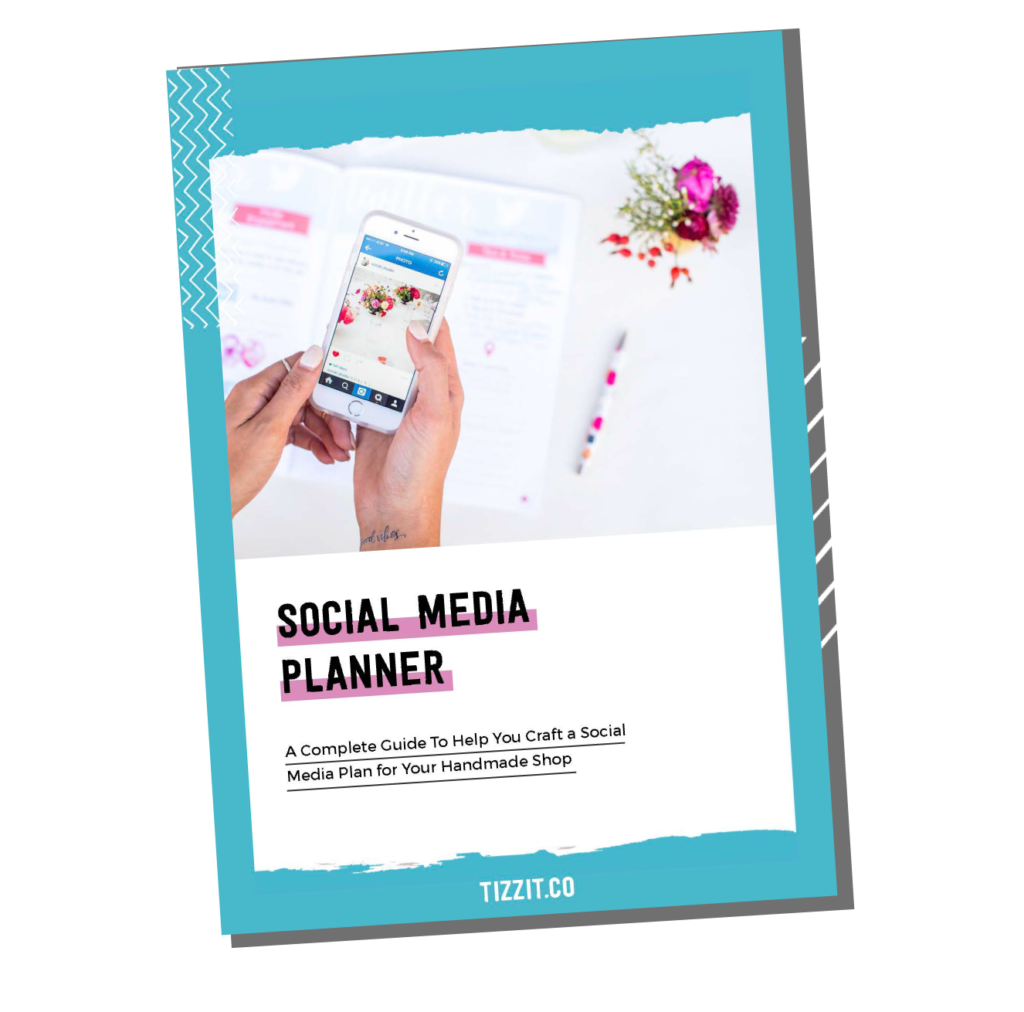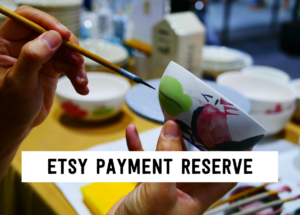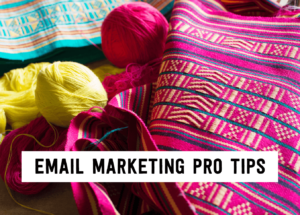
How to find the best Etsy keywords in 3 simple steps using Alura
If you want to be found in search results on Etsy, you need to optimize your product listing for SEO. And if you want to
join
join
Are you super frustrated with how little you get back compared to how much you put into your Facebook business page marketing?
Like your mom and a few friends liked your page but no one else (or almost) seem to be finding your page or buying your products for that matters.
There are usually 2 problems:
Let’s talk about both of them and figure out why your Facebook marketing might not be working and what to do instead.
Before we start, I’m talking about the organic, FREE Facebook reach here. I am not going to talk about or cover video ads, paid ads, boosting your posts or anything like that. This isn’t about giving money to Facebook, this is about trying to make the most out of the platform for free. I do have another blog post about Facebook advertising if you’re interested here, but this video is all about organic, free reach – and let’s get started right now with problem number one.
To understand why this might be happening, let’s go back to the basics, which is understanding how do people actually find your page. On Instagram, you’ve got the “discover” tab where you can find accounts that you’ve never heard of before simply because Instagram is recommending them to you. Pinterest works more like a search engine: you type in a few keywords and you can see pins from people that you’ve never heard about before. But on Facebook, what are the options there? How do people who do not follow or like your page or even know anything about your brand and your shop find you on the platform? They can do so if:
You invited them. It could be your friends and family and I’m sure a lot of you guys have done that.
Someone who already follows you shared one of your posts – then their friends are going to see that post and that means that you get more visibility to people who would not have found you otherwise.
Search bar. For people to find you that way, it means they already know about you to be searching for your business name or for your shop name on Facebook. To be honest, it’s not really perfect: sometimes you type in a name and it doesn’t even show up.
Those are the different ways that people can find you if they’re not already following or liking you on Facebook. This leads us to mistake number one.
Facebook is a great way to KEEP IN TOUCH with potential customers, nurture a relationship with them, turn them into customers and then repeat customers. It’s NOT necessarily the best way to find brand new people who have never heard from you (again not talking about paid ads – just organic). That leads us to mistake number two, which is…
If you’re taking Facebook for what it’s not, you may be waiting for Facebook to send people to your page, which really isn’t going to happen all that much. That means you need to be proactive and actually send people from outside of Facebook to your Facebook business page. It could be from your website, Etsy shop, blog or from anywhere outside of Facebook really. When they come up, start following and keep interacting and engaging you can use Facebook to foster that community around your brand, your shop, and your products. That is what that platform is really good at.

THIS FREE PLANNER WILL HELP YOU CREATE A SOCIAL MEDIA PLAN FOR YOUR HANDMADE SHOP. KNOW WHAT TO POST, WHEN TO POST IT, AND WHAT TOOLS TO USE!
That’s not true. Organic reach is not dead. Yes, the platform has changed. Yes, it is harder to get reach and visibility because it is more crowded but organic reach is not dead.
Just so we’re on the same page: the issue we’re talking about here is that even people who follow and like your page won’t see all of your posts. I know that sounds really harsh but that is how the algorithm works. Facebook uses engagement metrics to determine if your post should be shown in your follower’s feed. No one knows exactly how the algorithm work plus it changes all the time, but we don’t need to understand 100%. The simple underlying rule that you need to know about this algorithm is that Facebook wants people to stay for as long as possible on the platform. For that, they need to provide an experience that is customized for each user. Facebook is constantly learning how we use the platform and showing us more of what we engage with. What that means – and that’s very important – is that what you see in your newsfeed isn’t chronological – it’s based on relevancy. We see different things based on what we have engaged with and interacted with on the platform the last few days and weeks. That’s why the more you engage with a page, the most post from that page you will see in your feed.
Your organic reach is mostly based on your post engagement. The more engagement your post gets, the more it gets shown in the newsfeed. Engagement for Facebook is measured with:
Now that we understand that it’s going to be much easier to understand mistake number three, which is…
I’m not trying to be rude or mean, I’m just trying to give you that reality check: your posts need to be engaging. It can’t be all about you or all about your products, and it definitely can’t be all about getting that sale. People don’t really want to be sold to on the platform – that’s not why they come to Facebook. Of course, you want to sell your product, but as a guideline – and it is NOT a rule – you really don’t want to be posting more than 20 – 40% of the time about your product sales because that’s spammy. If your account is still small and you’re trying to build that community engagement on your page, you probably want to be more on the 20% side than the 40% side. Instead of always saying: “hey, here’s my new collection, buy it at this link” or “go to my Etsy shop to buy this”, “here’s this new color that I’ve got”, try posting things are genuinely engaging, interesting, delivering value to your ideal customers and fun. If you were to see your own post in your newsfeed, would your reaction just be like, “yeah, cool” or would you want to like, comment and share that post? I know this isn’t necessarily easy to figure out, so here’s a video where I go over examples to show you how makers are successfully creating engaging content so that you can get some examples and ideas and get inspired.
If you don’t have a posting strategy and you’re only posting from time to time when you have time you’re not really giving Facebook that data that says: “hey, people are engaging with me! Show them more of my stuff”. While you’re away working on something else, those people are engaging with other pages and so when you come back they’re seeing more of the other stuff. You really want to be there and engaging regularly and consistently on the platform. That doesn’t mean you have to spend hours doing it, but that does mean that maybe once a week you’ll need to sit down and schedule out – which you can do inside of Facebook – three to five posts that are going to go out that week. You can download a FREE social media planner to help you with your content strategy here.
The following tip on that is to look at your Facebook Insights. This is pretty much the equivalent of stats or analytics for a Facebook page. You get it for free with your Facebook business page, so just click on the “insights” tab and look at what works and what doesn’t. You want to be posting a variety of different things and trying different types of posts and then see what has created engagement and what didn’t really take off so that you can do more of what works. That’s what strategizing your Facebook posts is.
Our last mistake, mistake number five is that you’re not engaging on Facebook or you’re engaging in the wrong places. Facebook is a social media platform and being social means a two-way kind of deal. You can’t just expect people to come and engage on your page if you aren’t out there engaging where your customers are. I’d really like to challenge you to go and interact with those people where they are. If you are selling, for example, wedding invitations go into Facebook groups as your page and give nice tips and good, valuable information. Don’t spam giving just a link to your shop – that’s nasty. Be there and send valuable links and help people out instead to really engage where your ideal customers are.
Engaging in the wrong places is doing what I just said, but in groups that for example are just for makers. Those groups are fantastic to get help and feedback from the maker community and help you grow your shop (I have one that you can join here), but they’re not the place to go and share your link to try to get sales. These people are not your customers, so go where your customers are. If you sell toys or anything that’s got to do with kids or with being a mom, go into those Facebook groups for moms and give valuable, reliable advice and tips and just engage in the most natural way possible.
If you’re not engaging, you can’t expect people to engage back with you. Remember the social in social media. That’s it for today! I hope it was helpful. Don’t forget to grab your free social media content planner!
you might also like…
related articles

If you want to be found in search results on Etsy, you need to optimize your product listing for SEO. And if you want to

There has been a lot of talk in the Etsy community — and I mean A LOT of talk — about Etsy’s payment account reserve

Anyone who knows me knows that I am a HUGE advocate for using email marketing to grow and scale your handmade business. But you may
disclaimer
subscribe to youtube
THE LAUNCHPAD
get in touch
We acknowledge and give thanks to the Budawang and Yuin people, the Traditional Owners of the land we work and live on. We pay our respects to all Aboriginal and Torres Strait Islander Peoples and elders past, present and emerging.

Get Instant Access to
The FULL Resource library

grab this free
social media planner